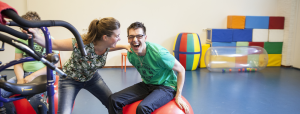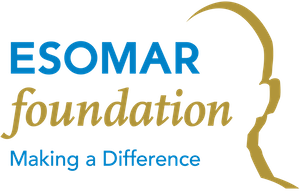
How research can help to give everyone a voice
Customer centricity is the core strategy of many organisations. How can we put clients at the heart of each organisation, delivering a better, more tailored and more streamlined customer experience? Often easier said than done. Especially when your client is not a typical customer. One of the most challenging aspects of market research is to actually give everyone a voice.
Since 2013, Beautiful Lives has worked together with Philadelphia. Philadelphia is one of the largest health care facilities in the Netherlands for people with severe mental disabilities. The vision of Philadelphia is to put its clients first. Developments in the Dutch health care landscape however show that an ongoing focus on reforms and efficiency can be at the expense of customer centricity and indeed have led to a strong focus on numbers and benchmarks. Philadelphia, however, believed that profound client understanding could reshape its care programs: built around people’s needs, rather than being gripped by incremental performance improvements.
To gain a true client perspective we realised that we had to find ways to involve the actual clients into the research. Philadelphia, a vivid supporter of the idea, asked us to start the project with their client group that shows ‘behaviour that is difficult to interpret’, which is more precise, instead of defining them as mentally disabled. It is us who have to put more effort in understanding people who behave and think differently. A true challenge for any market researcher! To accomplish this we combined several sources and methods with a main focus on making sure that we used methods that allowed clients to express their needs in an accessible manner and within a safe environment.
From the start we were fully aware of the fact that having a conversation with clients would require more than interview skills. It would require us to build relationships with people who often have difficulties trusting others, to interpret their non-verbal behaviour and sometimes to judge if clients would unintentionally get provoked. This consideration led to the choice to train Philadelphia coaches to do the client interviews. These staff members all have expertise to understand clients, but do not work with them on a daily basis. In this way we avoided that clients would not dare to share their genuine opinion because of their dependency on their care takers.
The first step in the research was the request to clients, family members and caregivers to take part in a self-directed photography task. In this way we created a natural, participant led set up, that helps participants to feel at ease. These pictures were the start of the conversations with clients and family members; a playful, engaging and at the same time substantial approach. The photos and the conversations helped us to understand the most important needs, even more so when it was impossible to express them in words. We chose to talk with clients and family members in in-home settings as this is the trusted context in which they feel comfortable. It helped to put the stories and pictures in a more complete context. The Philadelphia coaches moderated the client interviews and during some interviews a researcher was present as well. In focus groups with caregivers from different care locations, we discussed their perspective on the well-being of their clients. These approaches combined with self-directed photography, provided us valuable direction and input to the interview guides and set-up for the conversations. Finally, at the end of the data collection period we joined thinking with the coaches at a series of analytical workshops. Until today they are still important ambassadors of the outcomes of the project.
The project created a new paradigm within the organisation. Philadelphia decided to develop their complete client care program based on the output of the project. They defined core values for the group of clients whose behaviour is difficult to interpret. These values were then translated to all of Philadelphia’s care domains (physical care, housing, day care), basically indicating how care givers should care for clients. The values are now also leading in the annual evaluation interviews with caregivers. They provide clarity on mutual expectations to the client’s family. Also, self-directed photography became a tool that is used more often within the Philadelphia organisation, as it turned out to be a valuable way to give a voice to those who are often difficult to understand.
We are proud on the impact our work has in the Philadelphia organisation. It’s a key learning to us that if we can listen to their clients, clients all over the world, irrespective of their capabilities to express themselves, can be listened to and acted upon. This research shows that no matter how hard it is too reach out to certain groups of people, a little more effort and creativity pays!
By Gaby Siera, Maurice Palmen and Iris Aarts, Beautiful Lives
If you want to share your thoughts with us, please feel free to do so through info@beautifullives.com
